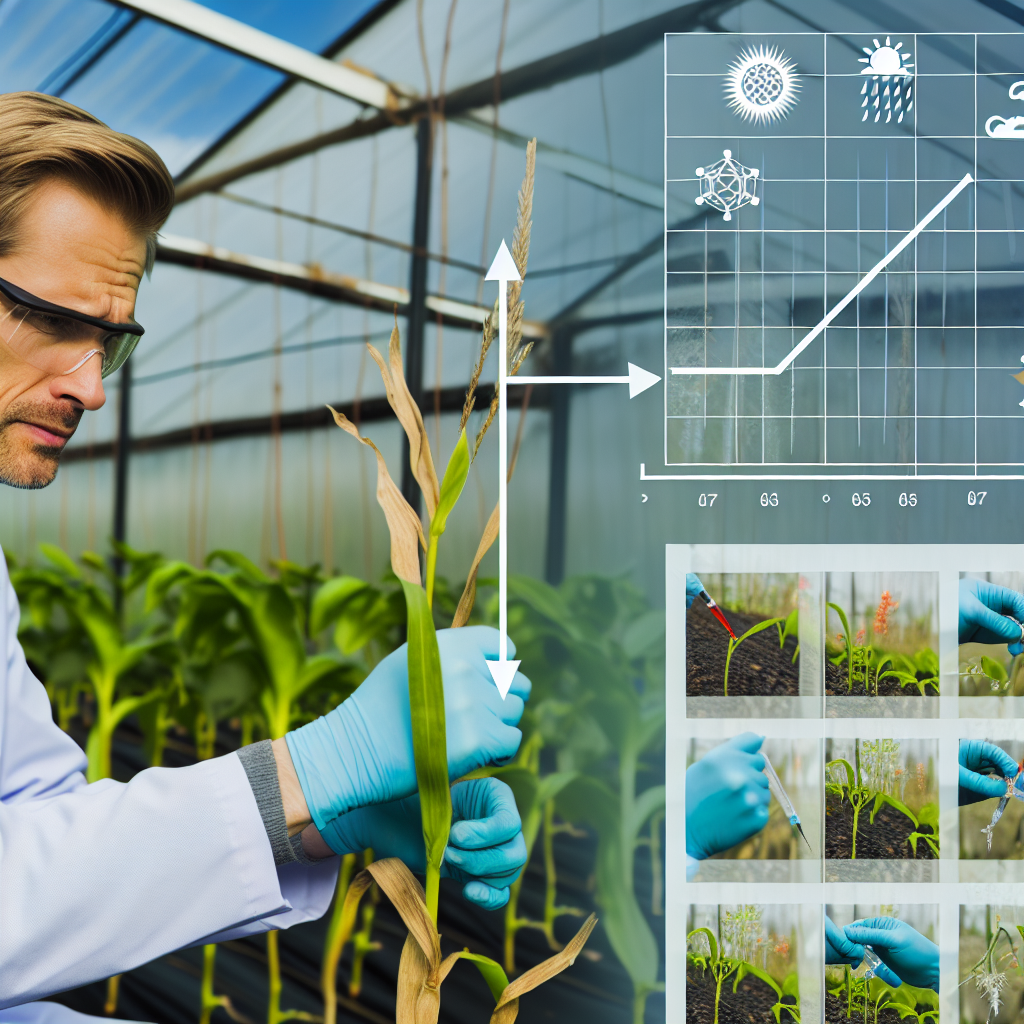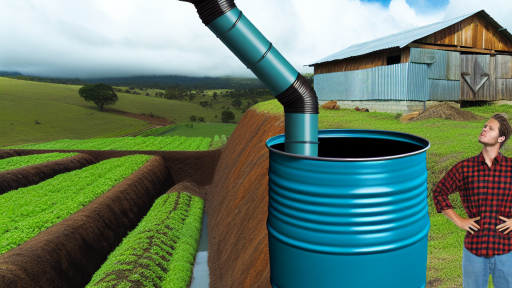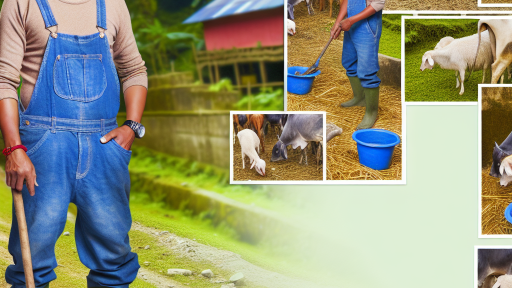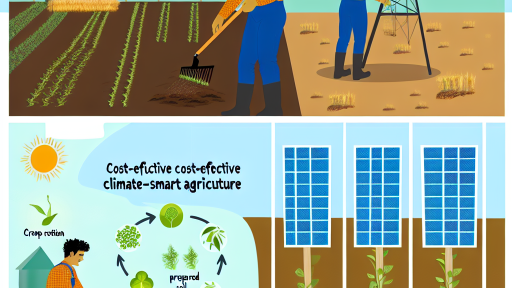Understanding Climate Change Impacts on Agriculture
Current Trends in Climate Change
The climate is changing at an unprecedented rate.
Global temperatures are rising due to greenhouse gas emissions.
This phenomenon significantly affects agricultural practices.
Farmers observe unpredictable weather patterns each year.
Extreme heat, droughts, and heavy rainfall disrupt crop production.
Soil Health and Fertility
Climate change impacts soil quality and fertility.
Increased rainfall leads to soil erosion and nutrient loss.
Drought conditions can cause soil degradation over time.
Healthy soil is essential for crop yields and sustainability.
Farmers must adopt soil conservation practices to mitigate these effects.
Pest and Disease Dynamics
Changes in climate affect pest and disease outbreaks.
Warmer temperatures can expand the range of many pests.
Pests thrive in milder winters, increasing their populations.
Farmers need to monitor pest activity continuously.
Integrated pest management strategies can help combat these challenges.
Transform Your Agribusiness
Unlock your farm's potential with expert advice tailored to your needs. Get actionable steps that drive real results.
Get StartedWater Resource Management
Water availability is increasingly becoming a concern.
Droughts create competition over limited water resources.
This competition affects both agriculture and ecosystems.
Farmers should consider water-efficient irrigation methods.
Capturing rainwater can also enhance water availability for crops.
Crop Diversity and Adaptation
Diversifying crops can build resilience against climate change.
Different crops may handle climate impacts better than others.
Farmers should select varieties based on changing conditions.
Research into climate-resilient crop varieties is ongoing.
Collaboration with agricultural scientists can lead to better choices.
Identifying Key Factors for Crop Adaptation
Climate Variability
Farmers must recognize the unpredictability of weather patterns.
This includes changes in rainfall, temperature, and extreme weather events.
Adapting to these variations is crucial for crop survival.
Soil Health
Healthy soil supports strong crop growth.
Farmers should focus on maintaining soil quality.
This effort includes using organic matter and employing crop rotation.
Pest and Disease Resistance
Crops need to withstand various pests and diseases.
Breeding resistant varieties helps mitigate losses.
Additionally, integrated pest management strategies prove beneficial.
Water Availability
Water scarcity poses significant challenges for agriculture.
Farmers should implement efficient irrigation systems.
Moreover, rainwater harvesting can enhance water supply during dry periods.
Genetic Diversity
Utilizing diverse crop varieties increases resilience.
Farmers should explore heirloom and drought-resistant seeds.
Showcase Your Farming Business
Publish your professional farming services profile on our blog for a one-time fee of $200 and reach a dedicated audience of farmers and agribusiness owners.
Publish Your ProfileDiverse planting reduces the risk of total crop failure.
Farmer Education and Training
Continuous learning is essential for adapting farming practices.
Farmers should seek training on sustainable methods and technologies.
Effective education enables them to make informed decisions.
Market Access and Economic Viability
Access to markets influences the choices farmers make.
Establishing connections with local markets can enhance profitability.
Furthermore, farmers should consider value-added products to improve income.
Selecting Drought-Resistant Crop Varieties
Importance of Drought-Resistant Crops
Drought-resistant crops play a pivotal role in sustainable agriculture.
They adapt to water scarcity and minimize yield loss.
These crops can preserve farmers’ livelihoods during dry spells.
Moreover, they contribute to food security in changing climates.
Assessing Local Conditions
Start by analyzing your local climate and soil conditions.
Understand the typical rainfall patterns in your region.
Evaluate your soil type and its water retention capabilities.
This initial assessment helps identify suitable crop varieties.
Identifying Drought-Resistant Varieties
Research local agricultural extension services for drought-resistant options.
Many universities and agricultural organizations offer valuable resources.
Seek out crops bred specifically for drought resilience.
Consider options like sorghum, millet, and certain bean varieties.
Utilizing Hybrid Varieties
Hybrid crops often present enhanced drought resistance.
Look for hybrids developed through traditional breeding techniques.
Some modern hybrids withstand drought better than traditional varieties.
Consult local farmers about their experiences with hybrids.
Trial and Experimentation
Before committing to large-scale planting, conduct tests.
Plant small plots of various drought-resistant crops.
Observe their growth, yield, and resistance to dry conditions.
This approach allows for informed decisions in crop selection.
Continuous Evaluation and Adaptation
Keep evaluating how your chosen crops perform over time.
Adapt your selection based on changing climate conditions.
Stay informed about new developments in crop breeding.
Join local farmer networks for knowledge exchange and support.
Discover More: Boost Farm Sustainability with Carbon Sequestration
Implementing Crop Rotations to Improve Soil Health
Benefits of Crop Rotation
Crop rotation enhances soil fertility over time.
This practice reduces soil erosion and degradation.
Additionally, it helps control pests and diseases.
Rotating crops diversifies plant families in the soil.
Choosing the Right Crops
Selecting appropriate crops is crucial for effective rotation.
Consider planting legumes to fix nitrogen levels.
Root vegetables can improve soil structure.
Include cover crops to protect soil during off-seasons.
Showcase Your Farming Business
Publish your professional farming services profile on our blog for a one-time fee of $200 and reach a dedicated audience of farmers and agribusiness owners.
Publish Your ProfilePlanning Your Rotation Schedule
Develop a plan that outlines your rotation strategy.
Monitor soil health metrics regularly.
Adjust your plan based on seasonal changes and results.
Ensure a balance between nutrient-consuming and restoring crops.
Implementing Best Practices
Maintain a diverse array of crops for optimal results.
Engage with local agricultural experts for tailored advice.
Keep detailed records of crop yields and health.
Regularly review and refine your crop rotation plan.
Challenges in Crop Rotation
Certain weather patterns may complicate crop rotations.
Market demand changes can affect your crop choices.
Also, practical knowledge and experience play key roles.
Be prepared to adapt and make necessary adjustments.
Uncover the Details: Drought-Resistant Crops for Sustainable Farming
Utilizing Precision Agriculture for Resource Management
Understanding Precision Agriculture
Precision agriculture uses technology to enhance crop production.
This method collects data to help farmers make informed decisions.
As a result, farmers can optimize yields while minimizing waste.
Implementing Data-Driven Decision Making
Farmers can leverage data analytics for better resource allocation.
For instance, soil moisture sensors guide irrigation practices.
Consequently, this minimizes water waste and increases efficiency.
Utilizing Drones and Satellites
Drones and satellite imagery provide critical insights into crop health.
They help monitor crop growth patterns and identify issues early.
A prompt response prevents larger problems down the line.
Enhancing Soil Management Practices
Precision agriculture supports tailored soil management initiatives.
Farmers can analyze soil composition effectively using technology.
Thus, they apply fertilizers and amendments in correct amounts.
Benefits of Precision Agriculture
- Increased efficiency in resource use
- Higher crop yields and reduced costs
- Improved environmental sustainability
Overcoming Challenges in Adoption
Adopting precision agriculture requires initial investment and training.
Farmers must also navigate data management complexities.
However, support from agricultural extension services can ease this transition.
Find Out More: Water Conservation Tips for Climate-Smart Farmers

Adopting Agroforestry Practices for Climate Resilience
Understanding Agroforestry
Agroforestry integrates trees and shrubs into agricultural landscapes.
This system enhances biodiversity and soil health.
Additionally, it helps manage water resources effectively.
Benefits of Agroforestry
Agroforestry improves crop yields and farm income.
It provides shade and shelter for crops and livestock.
Moreover, it reduces erosion and conserves soil moisture.
Attention to biodiversity also mitigates pest outbreaks.
Implementing Agroforestry Practices
Start by evaluating land suitability for agroforestry.
Consider tree species that complement existing crops.
Implement practices that promote ecosystem balance.
- Integrate nitrogen-fixing trees to enhance soil fertility.
- Use contour planting to reduce soil erosion.
- Implement silvopasture systems to combine livestock and trees.
Successful Case Studies
Farmers in Brazil have adopted agroforestry to combat deforestation.
Showcase Your Farming Business
Publish your professional farming services profile on our blog for a one-time fee of $200 and reach a dedicated audience of farmers and agribusiness owners.
Publish Your ProfileTheir practices show improved yields and economic resilience.
In Kenya, agroforestry improved food security and livelihoods.
These examples illustrate the potential for adaptation globally.
Challenges and Solutions
Transitioning to agroforestry can present challenges.
Farmers often face initial costs and learning curves.
Providing training and resources can ease this transition.
Support from agricultural organizations can also prove essential.
Looking Ahead
Agroforestry represents a promising solution for climate adaptation.
Farmers can improve resilience through diverse practices.
Collaboration will be key in expanding agroforestry worldwide.
Delve into the Subject: Soil Management Practices to Decrease Emissions
Investing in Soil Conservation Techniques
Importance of Soil Health
Soi health is vital for successful agriculture.
Healthy soil promotes robust crop growth.
Moreover, it enhances water retention and nutrient availability.
Investing in soil conservation techniques boosts overall productivity.
Implementing Cover Crops
Cover crops play an essential role in soil conservation.
They prevent soil erosion during off-seasons.
Additionally, these crops enhance soil structure and fertility.
Farmers should choose species suited to their climate and soil type.
Mixing different cover crops maximizes benefits for the soil.
Adopting No-Till Farming
No-till farming preserves soil integrity and moisture levels.
This practice reduces soil compaction and erosion.
Farmers using no-till methods often see improved crop yields.
Transitioning to no-till can minimize labor and machinery costs.
Furthermore, it promotes biodiversity in soil ecosystems.
Utilizing Organic Amendments
Organic amendments significantly enhance soil quality.
They improve nutrient content and microbial activity.
Compost, manure, and cover crop residues are effective options.
Incorporating these materials can lead to healthier soils over time.
Farmers should monitor soil health to assess amendment effectiveness.
Emphasizing Erosion Control Measures
Erosion control is critical for maintaining soil resources.
Methods like contour farming and terracing minimize runoff.
Planting vegetation along waterways helps prevent soil loss.
Farmers must invest in practices that suit their landscape.
Regular assessments can identify areas at risk of erosion.
Engaging in Crop Rotation
Crop rotation diversifies plant species in fields.
It interrupts pest and disease cycles effectively.
This practice enriches soil nutrients and reduces chemical dependency.
Farmers can adapt rotations based on market demands and climate.
Over time, crop rotation boosts resilience against climate change.
Showcase Your Farming Business
Publish your professional farming services profile on our blog for a one-time fee of $200 and reach a dedicated audience of farmers and agribusiness owners.
Publish Your ProfileEngaging in Community-Based Research and Innovation
The Importance of Local Participation
Community involvement is essential for successful crop adaptation.
Local farmers understand their unique environmental conditions.
Moreover, they can identify specific challenges they face.
Engaging the community fosters trust and collaboration.
Collaboration with Research Institutions
Partnerships with academic institutions enhance research efforts.
Universities often provide valuable resources and expertise.
Collaborative projects encourage knowledge exchange and innovation.
Examples from various regions showcase this model’s success.
Gathering Data and Feedback
Data collection is critical for understanding local ecosystems.
Farmers can provide firsthand information about crop performance.
This feedback helps adjust research approaches accordingly.
Continuous dialogue ensures research remains relevant to local needs.
Innovating Through Traditional Practices
Combining modern techniques with traditional practices proves effective.
Farmers hold knowledge of local crops and their resilience.
Integrating this wisdom leads to innovative solutions.
Moreover, it promotes community pride and cultural heritage.
Success Stories from the Field
Various communities have successfully adapted crops for climate change.
For example, a group in Southern California adopted drought-resistant varieties.
Meanwhile, farmers in the Midwest embraced cover cropping techniques.
These examples highlight the power of local engagement and research collaboration.
Additional Resources
Climate Impacts in the Great Plains | Climate Change Impacts | US …
Climate Change Impacts on Agriculture and Food Supply | US EPA




